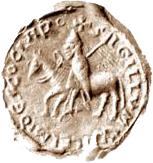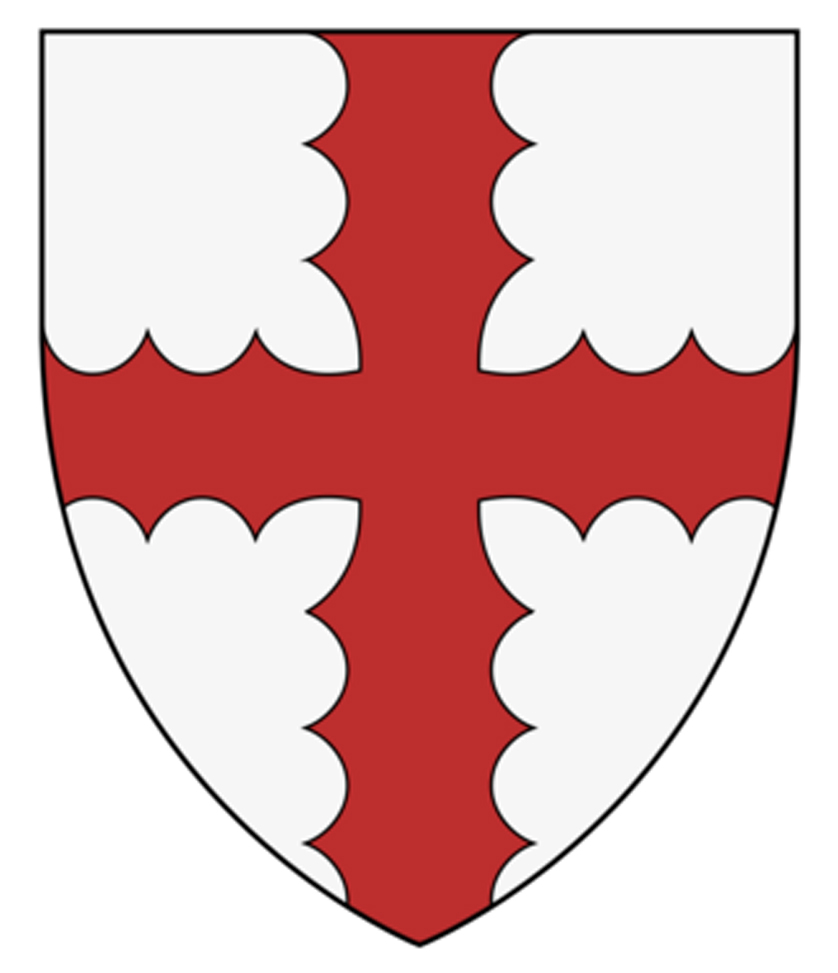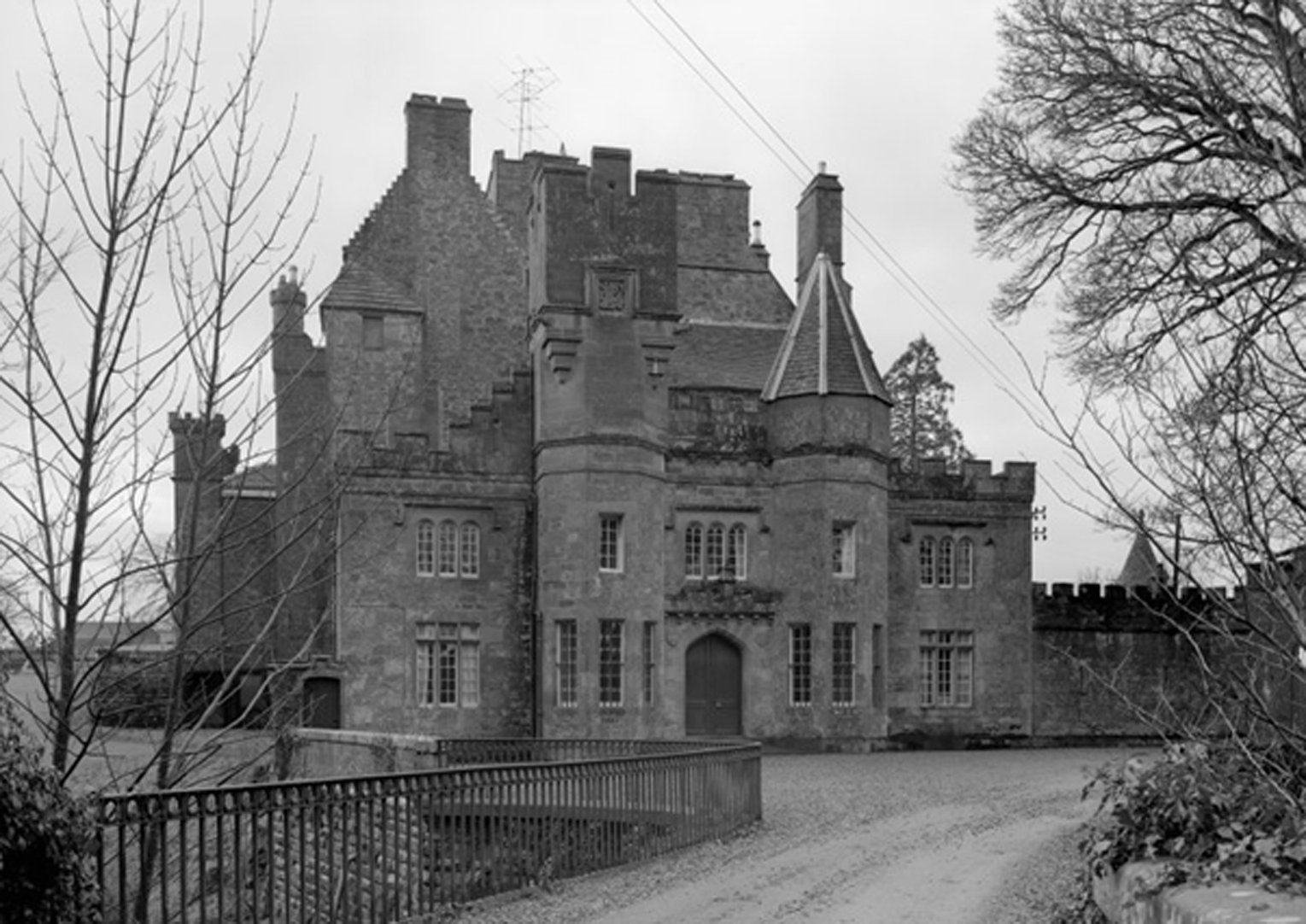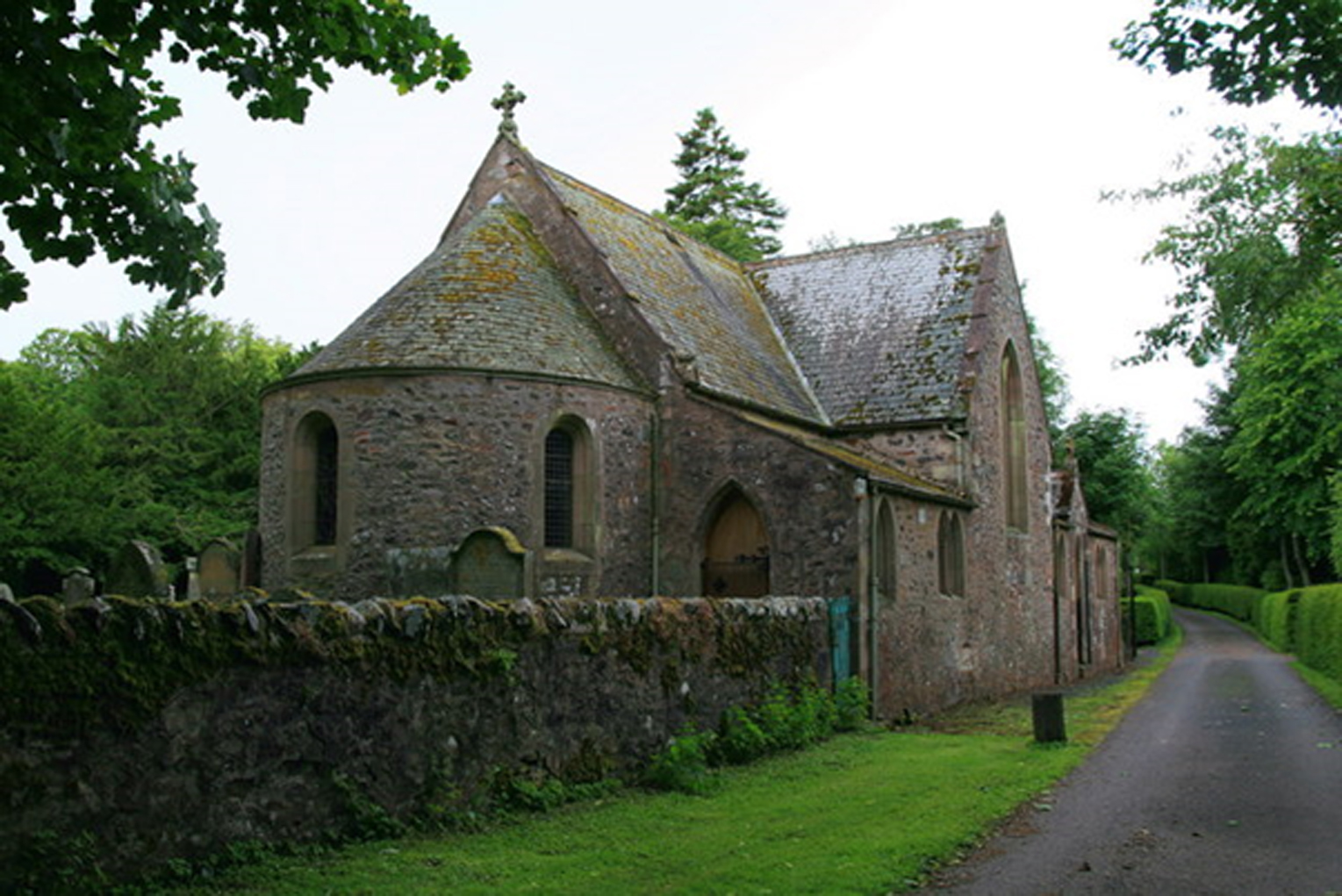St. Clair of Longformacus
Longformacus lies near Duns in Berwickshire, close to the English border. The Victorian-era Sinclair family history books suggested that a Gregory St Clair ‘of Berwickshire’, who paid homage to King Edward I in 1296 and is listed on the Ragman Rolls, must have been the ancestor of this family. We now know from the Enigmatic Sinclairs by Gerald Sinclair and Rondo Me, that is not the case.
From the 1200s, the lands of Longformacus belonged to the Mordington family and passed to Agnes de Mordington, who married Henry Haliburton. After the battle of Bannockburn in 1314, the couple resigned Longformacus back to King Robert the Bruce, who then granted it to Thomas Randolph, Earl of Moray, his favourite nephew. The lands subsequently passed to his daughter, Agnes Randolph, known as ‘Black Agnes’, who had married Patrick Dunbar, Earl of March. It was their heir, George Dunbar, who granted Longformacus to James St. Clair, second son of Sir John St. Clair of Herdmanston and Margaret, daughter of Sir Henry Sinclair of Roslin. Therefore, the Longformacus family descends in the male line from the St. Clairs of Herdmanston and maternally from the Roslin branch.
In June 1384, Henry Sinclair, 1st Earl of Orkney, granted James, ‘Lord of Longformacus, our dearest cousin,’ 20 merks out of the lands of Leny, Midlothian; James was already styled ‘of Longformacus’ by 1384, renting from his superior, George Dunbar. In 1395, however, James bought Longformacus outright when George Dunbar sold all his lands and moved to England after falling out with the king. To cement both families’ close relationship further, on 20th February 1418, Henry, 2nd Earl of Orkney, granted to James, the son of James St. Clair of Longformacus, an annual 20 merks to be uplifted from the lands of Leny in Midlothian, just as their fathers had done in 1384.
Over the following generations, the Longformacus family became increasingly wealthy and added to their landholdings; several of them were advocates, merchants, some holding the offices of sheriff, some were Members of Parliament. Sir John St. Clair (d. 1648), a successful merchant in Edinburgh, bought the estate of Stevenson in East Lothian in 1624 which was created a baronetcy of Nova Scotia in 1636. Sir Robert (d. 1678) was a successful advocate and maintained a close relationship with the Sinclairs of Roslin, via their descendants in Caithness. By 1670, Sir Robert had bought up the debts of both George Sinclair, 6th Earl of Caithness, and his father, totalling 70,000 merks – George the 6th Earl died that year in debt and without an heir, leading to the temporary takeover of the earldom by Sir John Campbell of Glenorchy. Sir Robert also purchased a baronetcy of Nova Scotia in 1664, registering his arms, consisting of a silver background overlaid with a red engrailed cross, contrasting with the blue engrailed cross of the Herdmanston family and the black engrailed cross of the Roslins.
The lands of Over Bilbster and Auldwick in Caithness had been held by Thomas St. Clair of Longformacus (d. 1607), who been a servant of the Earl of Caithness. James (d. c.1632) had a precept of clare constat over the same lands from George, 5th Earl of Caithness, in 1624, which his son, the abovementioned Sir Robert, resigned in 1677 to Francis Sinclair of Stirkoke and Patrick his son. Sir Robert’s grandson, also Sir Robert, (d. c.1725) bought the barony of Lochend and Newtonlees (Berwickshire) in 1676. There were also family tragedies, such as the murder of Matthew St. Clair by his friend John Spottiswood in 1606, and the ensuing fall out in Privy Council which dragged on for many years before agreeing a suitable punishment, as Matthew had left a wife and child requiring support.
One short-lived branch developed at Auldbar near Brechin in Angus when James St. Clair (d. c.1702) bought the estate around 1650 but gradually sold it off when he acquired Kinnaird in Fife in 1675. He became a baronet and his son, George, the second baronet, sold Kinnaird shortly before he died in 1726. George’s son John inherited the baronetcy and had an illustrious career in the Army. By 1754 he was promoted to Lieutenant-Colonel and Deputy Quarter Master General of the forces in America.
By the mid-1700s, however, the family were facing financial difficulties. In 1752, Eupham, the granddaughter of Sir Robert St. Clair (d. 1678), after giving up her previous millinery business, ran a boarding school for seven or eight young ladies of the nobility in Forrester’s Wynd, Edinburgh, where Sir Walter Scott’s mother, Ann Rutherford, was a pupil.
Captain Harry St. Clair succeeded to the barony in 1764 on his brother John’s death. The lands of Lochend and Newtonlees had already been sold in 1708, and Longformacus itself was eventually sold to Rear Admiral Rodham Home. Despite inheriting the lands of Carlowrie near Kirkliston from an unidentified ‘Henry Sinclair of Carlowrie’ around 1719 and selling it on in 1745, Sir Harry was unable to make the barony financially viable. He died at Leith in 1768, unmarried and without heirs, when he is described as ‘late of Longformacus, baronet.’
The title was subsequently inherited by John, Harry’s second cousin and the great-grandson of George, son of Sir Robert St. Clair of Longformacus (d. 1678). Sir John was a writer (lawyer) in Edinburgh and in 1744 he married Elizabeth, daughter of Charles Allen, a surgeon in the city. Their son, also Sir John, inherited the title on his father’s death in 1798 but he apparently died in Edinburgh around 1843, leaving no male heir, and the baronetcy became extinct.
Nina Cawthorne
DESCENDANTS
m. (1) Sir James Primrose of Barnbougle (Midlothian)
m. (2) Mr. Francis Montgomery of Giffen (Ayrshire)




